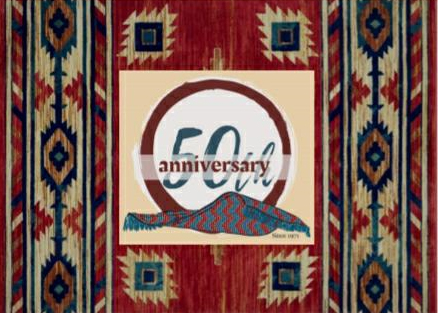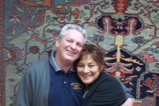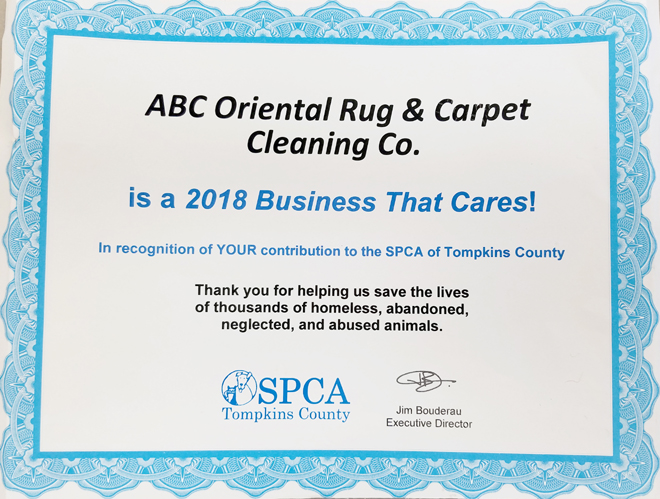ABC MONTHLY NEWSLETTER
December 2020
Welcome to Our Monthly Newsletter!
We hope you will enjoy this month's articles.
This month's topics are:
COVID-19 PANDEMIC
AREA RUGS
MISCELLANEOUS
CONSIGNMENT RUGS FOR SALE REMINDER
If there is a topic you would like us to cover in one of our upcoming newsletters, please call us at
607-272-1566
or contact us by clicking here.
GREAT NEWS!
GOT QUESTIONS?
NOW YOU CAN TEXT US at
607-272-1566
REMINDER:
Don't forget to keep checking our website for our beautiful
We have more than 25 new rugs hanging as of October!
COVID-19 and mRNA VACCINES
mRNA vaccines (messenger RNA) are the newest players in the race to defeat the COVID-19 pandemic that is currently engulfing our world.
An mRNA vaccine is very different from a traditional vaccine. Many companies worldwide have been working on developing this type of vaccine specifically for the SARS-CoV-2 virus but none have yet (as of this writing) been approved.
But what are mRNA vaccines? How do they work? Are they effective? Are they safe? Can they be developed quickly and in large enough quantities for mass immunization? These are just a few of the questions that must be answered before any mRNA vaccines can be approved for distribution.
Here is what we know:
DNA and RNA IN HUMANS and VIRUSES
DNA or deoxyribonucleic acid is the molecule that contains each organism's genetic code. In humans and other mammals, the DNA remains in the nucleus of each cell and the genetic instructions are copied into the RNA (ribonucleic acid), which in turn acts as a messenger and brings the copies to the rest of the cell through a process that forms the proteins that are needed to carry out our bodily functions.
However, in some viruses, like COVID-19, RNA rather than DNA carries the genetic information. It is possible to produce synthetic COVID-19 RNA molecules in a lab capable of provoking our immune system to form a defense strong enough to kill the actual virus should it invade our systems.
OUR IMMUNE SYSTEMS and VACCINES
Our immune systems are composed of 2 parts. The innate immune system is the immunity we are born with. The acquired immune system is that which develops as we come into contact with pathogens.
Traditional vaccines usually only work with the acquired immune system and need another ingredient, called an adjuvant to activate the innate immune system.
The mRNA vaccine can activate the innate immune system as well as the acquired immune system without the need to add adjuvants. The type of immune response from an mRNA vaccine would be a very strong one.
mRNA VACCINES FOR COVID-19
Most of what we know about mRNA or messenger RNA vaccines has come from work in the cancer field. Every cancer tumor is different. Tumor-specific mRNA vaccines have been developed to target an individual patient's tumors. They activate the body’s T-cells (the acquired immune system that kills cells) to destroy those tumors.
In viral infections such as the coronavirus, a strong T-cell response is needed, but with a virus such as SARS-CoV-2 (COVID-19), another part of the acquired immune system, the B-cells, need to be activated as well to produce antibodies that will mark the virus for destruction. The B-cells are not as relevant for cancer tumors so there has been limited experience with B-cell responses and mRNA vaccines.
TRADITIONAL VACCINES vs mRNA VACCINES
Please continue reading here for further information on this important subject as well as information on 2 vaccines having promising results with human clinical trials.
BALUCHI ORIENTAL RUGS
ANTIQUE BALUCHI ORIENTAL RUGS
LOCATION
Antique Baluchi oriental rugs exhibit a wide range of styles and were more a blend of Turkish, Persian, and Caucasian rug styles than a distinct Baluchi style.
The region called Baluchistan, where antique Baluchi rugs were produced by tribes in eastern Persia and western Afghanistan, no longer exists as an independent region. In place of that area there now exists a region on either side of the border between south-eastern Iran, western Pakistan, and southern Afghanistan.
This was where the main area for weaving took place, giving rise to the antique rugs of Baluchistan.
FEATURES
The antique Baluchi rugs were typically coarsely woven and many featured the tree of life motif. The quality of the wool and the color combinations made them fairly easy to identify.
The colors were typically dark tones of red, brown, blue, purple, and ivory. All the rugs used black outlines and black shading to make the original shades of the colors look even darker.
MOTIFS USED
Many motifs were actually created by the Baluchi tribes or were transformations from other patterns.
The rugs featured the repetition of a singular allover pattern consisting of different geometrical motifs and this is one of their unique characteristics.
Some of these motifs include the tree of life and allover repeat designs as mentioned above, as well as diamond latch hook and medallion patterns and others.
EARLY DISLIKE OF BALUCHI RUGS
The antique tribal Baluchi rugs were considered by many to be too dark with little use of ivory or white and a restricted range of colors.
They were also considered to be fragile because of the looseness of their weave and the softness of their wool. (Although, nomadic people typically had to have rugs in their homes that were light, and soft as well, so they could be easily moved.)
It was often pointed out they were very similar to the rugs of their neighboring Turkoman tribes and in the city and village rugs of nearby Iran. As a result, they were never as valuable as rugs produced in close by regions in Persia, Turkey or the Caucasus. This relative disrespect for the antique Baluchi rugs eventually led to most of them being lost or destroyed and even overused and abused.
ANTIQUE BALUCHI RUG COLLECTORS TODAY
The collectors of today show much more appreciation for the antique rugs than in the past. Actually, those who collect and appreciate Baluchi oriental rugs today realize even though they may be derived from Turkoman, Persian, and other cultural designs, they have a distinctive quality of their own.
BALUCHI ORIENTAL RUGS TODAY
The term Baluchi (Baluch, Balouch) refers to people whose primary language is Baluch. Many different groups of people are sometimes referred to as Baluchi. They include the Barbari, Timuri, Taimani, Makrani, Sarawani, and others.
Most Baluchi tribal people today live in Pakistan and are divided into 2 groups: Sulaimani and Makrani. A small number live in the Punjab province of India.
Weavers in the Southern part of the Baluch region typically weave flatweaves or kilims (rugs without a pile). Their kilims usually use undyed wool, making them rather somber-looking.
The people of the Southern Baluch area are also known for their embroidery. They decorate their bags with tassels and with shells found in the deserts of south Afghanistan left over from ancient oceans.
Weavers
in the Western Baluch area produce the majority of Baluchi rugs and
bags. Approximately 2/3 live in Iran and most of the rest in Afghanistan
with a few tribes in Turkestan.
Baluchi rugs sold in the Iranian collection city of Meshad can be called Meshad-Baluch rugs. Those sold in the Afghanistan collection city of Herat are known as Herat-Baluch rugs. As a general rule, Baluchi rugs are labeled according to the region in which they are sold.
Because of the nomadic nature of the Baluchi people, Baluchi rugs can be anywhere from Iran, Afghanistan, and surrounding areas. Each region has given different aspects to its rugs such as color and pattern variations. However, unless you ask the Baluchi people themselves, it is difficult to identify the particular area where a rug was actually woven.
CONSTRUCTION OF BALUCHI ORIENTAL RUGS
To learn more about Baluchi oriental rugs including their construction, motifs used, war rugs, etc., complete with photos, please continue reading here.
CONTEMPORARY CHINESE RUGS
Contemporary Chinese Rugs are those handwoven rugs produced in China in the last quarter of the last century. They are very common in homes today and we often see them in our rug cleaning plant at ABC.
They are sometimes called ‘sculpted Chinese wool’ rugs because of the tool used around the floral designs. They are also referred to by their knot count as 60-line, 90-line, 120-line, etc. They are generally thick, heavy, deep-piled rugs in a variety of colors and motifs and will have large and pristine white fringes at both ends.
When new, they can be quite beautiful to look at and walk on but there are some serious concerns unique to their construction that need to be pointed out when it comes time to clean them or if you see one on sale and would like to know more about it.
CHEMICAL WASHING of CONTEMPORARY CHINESE RUGS
Chemical washing, usually with a solution using chlorine bleach, is a common procedure used to dissolve the wool fiber cuticles in a rug in order to produce some desired textile effects. This process helps to make the wool reflect more light so that it gives the rug more of a silky look and feel. It also helps to mute the colors so it is more appealing to the eye. It also softens the feel of the wool so that it feels smooth rather than scratchy.
Light treatments of chemical washing can create some of these desired results. Aggressive treatments can create a lot of damage and it is important to remember that this type of treatment ALWAYS causes SOME damage to the fibers. It is just a matter of how much.
Sometimes the damage does not become apparent until the rug is cleaned. At ABC, we always thoroughly inspect rugs before cleaning to make our customers aware of possible problems that could occur because of the particular construction of any rug, especially these contemporary Chinese rugs.
One plus about the Chinese rugs from this era is that the normal worry about 'dye bleeding' is lessened considerably by the prior chemical washing (as well as by having been around long enough to have already been washed a few times).
SUN DAMAGE on CONTEMPORARY CHINESE RUGS
These contemporary Chinese rugs are extremely sun-sensitive and will fade. How much the colors will fade depends on how much the fibers were damaged with the initial chemical wash. They cannot be put out in the sun to dry or be cleaned with high temperatures as this will make the fading occur faster. Even in a fully dry state, these rugs will fade with direct sunlight. To minimize this, the rugs should always be rotated annually to even up fade and wear.
To check for fading before any cleaning or purchase, just flip over half of the rug onto itself to compare the back and front colors. Since the back side of the rug has had no environmental exposure, those colors will be more true to the original. It is also recommended to ‘grin’ the fibers on the front side to compare the tops of the fibers to the roots. There you will see the difference between the color vibrancy at the top tips versus the colors at the base of the fibers.
Another procedure to check out these contemporary Chinese rugs is to walk around the rug to note the difference between light and dark. All rugs have a light and a dark direction, depending on if you are looking into the grain of the face fibers or looking with the grain. With these particular rugs, the difference between light and dark is extremely noticeable.
SPOTTING DANGERS and CONTEMPORARY CHINESE RUGS
These contemporary Chinese rugs are extremely sun-sensitive and will fade. How much the colors will fade depends on how much the fibers were damaged with the initial chemical wash. They cannot be put out in the sun to dry or be cleaned with high temperatures as this will make the fading occur faster. Even in a fully dry state, these rugs will fade with direct sunlight. To minimize this, the rugs should always be rotated annually to even up fade and wear.
To check for fading before any cleaning or purchase, just flip over half of the rug onto itself to compare the back and front colors. Since the back side of the rug has had no environmental exposure, those colors will be more true to the original. It is also recommended to ‘grin’ the fibers on the front side to compare the tops of the fibers to the roots. There you will see the difference between the color vibrancy at the top tips versus the colors at the base of the fibers.
Another procedure to check out these contemporary Chinese rugs is to walk around the rug to note the difference between light and dark. All rugs have a light and a dark direction, depending on if you are looking into the grain of the face fibers or looking with the grain. With these particular rugs, the difference between light and dark is extremely noticeable.
FRINGE DANGERS and CONTEMPORARY CHINESE RUGS
To continue reading about these rugs, please click here.
GRACE MURRAY HOPPER
Grace Murray Hopper was a woman who possessed extraordinary insight and determination and made lasting contributions in several fields where women were not always welcome. She succeeded as a brilliant mathematician, a computer technology pioneer, and a US Naval officer in a life that spanned nearly the entire 20th century.
GRACE MURRAY HOPPER EDUCATION
Grace Murray Hopper had the fortune to be born in 1906 into an upper middle class family. Her father was a successful insurance broker and her mother had pursued a career in geometry by special arrangement, since it was not a job encouraged for the women of the time period. Both parents believed their daughters should have the same access to education as their brother. Thus, her parents, with this progressive view of education, firmly encouraged Grace’s pursuit of higher learning.
Grace attended Vassar College in 1924 and excelled in mathematics and physics. She graduated in 1928 with Phi Beta Kappa honors and received a Vassar College Fellowship, a scholarship that financed her continued graduate study in mathematics at Yale University. She earned her MA in 1930 from Yale in mathematics. She began teaching at Vassar College in 1931 while earning her Ph.D. from Yale. Grace was one of only 30 women in the nation to earn a Ph.D in 1934 and she was the first woman to earn a Ph.D in mathematics.
That year, she married Vincent Hopper, an English teacher from New York University.
DR. GRACE MURRAY HOPPER and the US NAVY
After the outbreak of WWII, Grace decided to follow in her great- grandfather’s footsteps and she enlisted in the US Navy in 1941, his branch of the armed forces. Unfortunately, she was rejected because did not meet the weight and height requirements. She was too small, just 5'2 and less than 100 pounds!
In 1943, she took a leave of absence from Vassar College where she was an associate professor in mathematics, to join the Midshipman’s School for Women in the US Navy Reserves. Grace graduated first in her class as Lieutenant Junior Grade Grace Murray Hopper.
DR. GRACE MURRAY HOPPER at HARAVARD and the MARK I, II, and III
The Navy, aware of her excellence in mathematics, assigned Grace to work with the Mark I computer at the Bureau of Ordnance Computation Project at Harvard University under Commander Howard Aiken. The Mark I was the first computer automatically sequenced to calculate the angles for the naval guns when the weather was going to be bad.
At Harvard, she learned to program the MARK I computer and it was here where she came up with the idea of writing down common bits of code and storing that code on the MARK I. She called them subroutines. Then she figured that she could instruct the computer to call the desired routines and execute the command. That idea she called a 'compiler', a fundamental concept in computer code today. Not everyone was immediately impressed. It took her some time to prove that computers could do more than just arithmetic and that they could actually write programs!
During the building of the Mark II, the computer suddenly and for no apparent reason stopped. Upon inspection of the computer, Grace and her team found a moth which had flown into a relay from an open window. The moth had been pulverized by the relay and consequently had caused the device to fail. The term 'bug' was thus popularized to signify any system malfunction.
After the War, Grace and her husband divorced and Grace again decided to reenlist in the Navy. Unfortunately, she had just turned forty and the maximum age was thirty-eight, so she was forced to leave. She decided to remain at the Harvard Computational Lab as a member of the Naval Reserves and turned down a full professorship at Vassar. At Harvard, Hopper continued to work on the Mark II and the Mark III.
DR. GRACE MURRAY HOPPER and the FLOW-MATIC and COBOL
For information on the life of this extraordinary woman including many of her remembered quotes and the many awards she received during her life as well as posthumously, please continue reading here.
DECEMBER SPECIAL
ALL OUR REGULAR DISCOUNTS CONTINUE
and
REMEMBER TO USE THE GIFT CERTIFICATES YOU EARNED IN NOVEMBER
FOR YOU and YOUR FAMILY and FRIENDS
THIS HOLIDAY SEASON!
Call or Text Our Office at 607-272-1566 for More Info
DON'T FORGET TO CHECK YOUR MAILBOX
TOWARDS THE END OF DECEMBER FOR YOUR
REGULAR CUSTOMER APPRECIATION DISCOUNTS
FOR JANUARY, FEBRUARY, and MARCH of 2021!
STAY SAFE & STAY HEALTHY
SEE YOU in 2021--
OUR 50th YEAR IN BUSINESS!!

THANK YOU!! WE LOOK FORWARD TO CONTINUING TO SERVE YOUR TEXTILE CLEANING AND REPAIR NEEDS!
Get New Posts Right To Your Inbox!
Get our monthly newsletter, just like this one, delivered right to your inbox each day. Just sign up and we will send you the best new articles and videos as they become available.
Your email address will NEVER be spammed, sold, or shared. You are welcome to unsubscribe at any time with the link in the email.
Top of October 2020 Newsletter
"The Cleanest Clean You've Ever Seen."
by
ABC Oriental Rug & Carpet Cleaning Co.
130 Cecil Malone Drive Ithaca, NY 14850
607-272-1566

ABC
Carpet & Rug
Spotting Guide

ABC Oriental Rug & Carpet Cleaning Co. has been family-owned and operated in Ithaca and surrounding areas for more 50 years!
Our company is a reflection of our family name and pride.
Please Like us on Facebook!
for more information and to find out what we are doing at our business and in the community!
Stay Connected!
Links to Our Services
Allergy Cleaning
Area Rug Cleaning
Oriental Rug Cleaning
Rug Hand & Machine Repair
Upholstered Furniture Cleaning
Tile & Grout Cleaning & Sealing
We are proud sponsors of the SPCA of Tompkins CO:

Newsletter Archives Categories
~~~~~
~~~~~
Area Rugs & Wall-to-Wall Carpet
~~~~~
General Cleaning, Do-It-Yourself, & Green Cleaning
~~~~~
Wood Floor Coverings & Alternatives
~~~~~
~~~~~
Ceramic Tile & Grout Cleaning & Sealing
~~~~~
Health & Environmental Concerns
~~~~~
~~~~~


